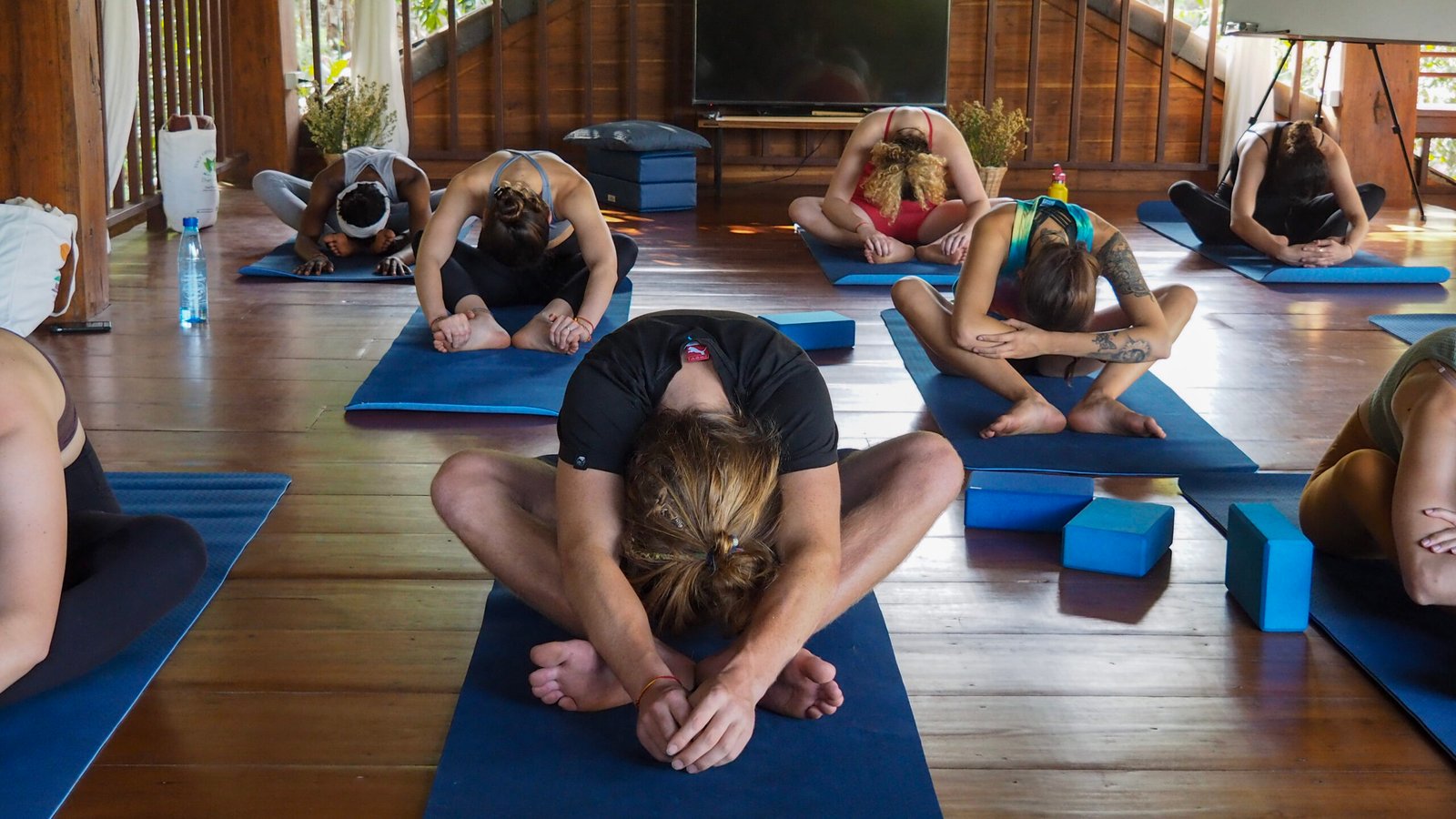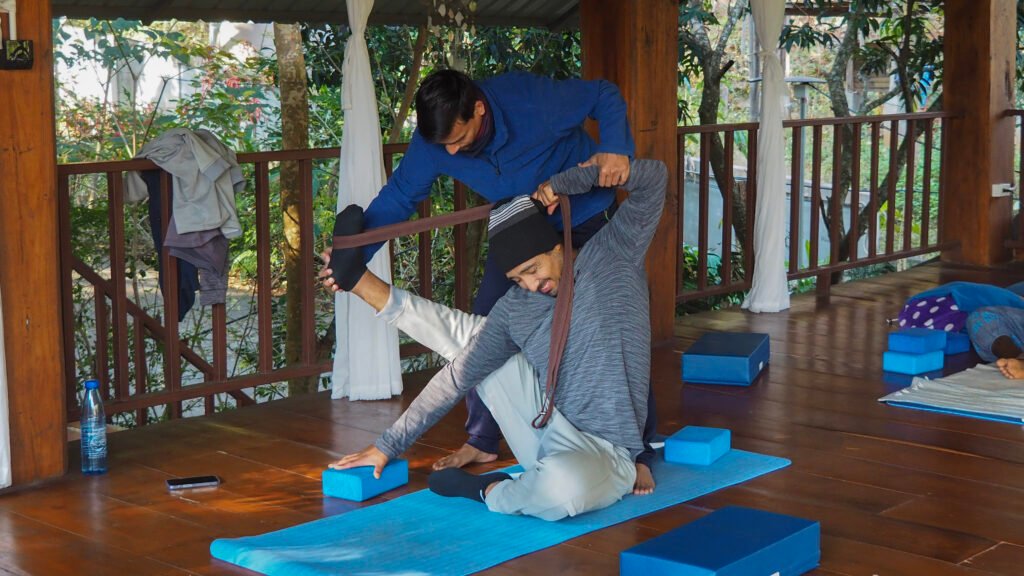
Are you looking for a way to stay limber and flexible as you age? Look no further than yoga! This ancient practice has been shown to improve flexibility, balance, and overall mobility in people of all ages. Whether you’re a senior citizen or just starting out in your yoga journey, the benefits of regular practice are endless. In this blog post, we’ll explore how yoga can help keep you limber throughout life and why it’s never too late (or early!) to start practicing. So grab your mat and let’s get started on the path to a more supple body!
What is Yoga and How Does it Benefit Flexibility?
Yoga is a mind-body practice that incorporates physical postures, breathing techniques, and meditation. Yoga can help improve flexibility, balance, and strength.
There are many different types of yoga, but all styles share the same basic principles. In yoga, you use your body and breath to move through a series of poses designed to increase flexibility, strength, and balance. The poses can be performed in a variety of ways, depending on your level of experience and fitness.
Yoga can help improve flexibility by lengthening and stretching the muscles. It can also help improve balance by strengthening the muscles around the joints. And finally, yoga can help improve strength by toning the muscles throughout the body.
Whether you’re young or old, yoga has something to offer everyone. If you’re looking for a way to improve your flexibility, balance, and strength, give yoga a try!

Benefits of Yoga for Different Age Groups
Yoga is a great way to stay flexible at any age. Here are some of the benefits of yoga for different age groups:
For young people, yoga can help with body awareness and coordination. It can also improve strength and flexibility.
For adults, yoga can help relieve pain from conditions like arthritis and back pain. It can also help with balance and flexibility.
For seniors, yoga can help improve balance and reduce the risk of falls. It can also help with joint pain and stiffness.
Types of Yoga to Improve Flexibility
If you’re looking to improve your flexibility, yoga is a great option! There are many different types of yoga that can help you increase flexibility, depending on your goals and needs. Here are a few popular options:
Hatha Yoga
Hatha yoga is a slow-paced form of yoga that includes various postures and breathing exercises. It’s a great choice for beginners or those looking for a more gentle practice.
Vinyasa Yoga
Vinyasa yoga is a faster-paced form of yoga that focuses on linking breath with movement. It’s a great workout and can help build strength as well as flexibility.
Yin Yoga
Yin yoga is a slower-paced, meditative form of yoga that involves holding poses for longer periods of time. This type of yoga can be very relaxing and is ideal for those seeking increased flexibility.
Restorative Yoga
Restorative yoga is a calming form of yoga that uses props to support the body in each pose. It’s perfect for those looking to wind down and relax both physically and mentally.
Getting Started: Choosing a Class or Program
If you’re new to yoga, the prospect of choosing a class or program can be daunting. There are so many different types of yoga classes out there, and it’s not always clear which one is right for you. Here are a few things to consider when choosing a yoga class or program:
-Your fitness level and goals: If you’re relatively fit and are looking for a workout, a more strenuous style of yoga like Ashtanga or Bikram might be right for you. If you’re just starting out, or are looking for a more relaxed practice, try a slower-paced class like Hatha or Iyengar.
-Your schedule: If you have a busy schedule, look for classes that fit into your free time. Many studios offer early morning or evening classes to accommodate different schedules.
Essential Tips for Increasing Flexibility Through Yoga
If you’re not flexible, you’re not alone. According to a recent study, only 26 percent of Americans can touch their toes. But that doesn’t mean you have to resign yourself to a life of stiffness. Yoga can help increase your flexibility, even if you’re not naturally bendy.
Here are some essential tips for increasing flexibility through yoga:
1. Start slow and be patient.
Don’t try to force your body into positions it’s not ready for. Take your time and listen to your body. Over time, with regular practice, you’ll notice an improvement in your flexibility.
2. Don’t push yourself too hard.
Yoga should be a relaxing and enjoyable experience. If you find yourself feeling frustrated or in pain, back off and take it down a notch. There’s no need to push yourself beyond your limits.
3. Breathe deeply and focus on your breath.
This will help you relax into the stretches and ease any tension you may be holding in your body. Remember that yoga is not about achieving the perfect pose, but rather about connecting with your body and mind through the breath.
Common Mistakes To Avoid When Practicing Yoga
There are some common mistakes that people make when practicing yoga which can lead to injuries. Here are four of the most common mistakes to avoid:
1. Don’t push yourself too hard. It’s important to listen to your body and not push yourself beyond your limits. If you feel any pain, stop and rest.
2. Don’t hold your breath. Breathe deeply and slowly throughout each yoga pose. This will help you stay relaxed and prevent dizziness or lightheadedness.
3. Don’t arch your back. Keep your spine straight and avoid arching your back, especially in forward-bending poses. This can put unnecessary strain on your spine and lead to back pain.
4. Don’t tense up. Try to relax your muscles and keep them loose throughout each pose. Tensing up will only make the yoga poses more difficult and increase the risk of injury.
Conclusion
Yoga is a great way to increase your flexibility as you get older, allowing you to stay limber and enjoy life more comfortably. Whether it’s taking part in online classes or simply doing some basic stretches at home, yoga can be adapted for people of all ages and abilities. Making sure that you stretch daily is an important part of staying fit and healthy throughout life, so why not give yoga a try today?
Yoga Samaadhi Upcoming Events Sustainability Activity | Outreach Program | Yoga Teacher Training (Chiang Mai, Thailand)

Read Our Blog
Read our articles on different topics of yoga, sustainability and community updates…
More Details
Yoga TTC in Thailand
Learn about yoga teacher training and how it guides you to a harmonious lifestyle…
More Details
Community Outreach Programs
Find out more about hill tribes, their ways of life and how we can take part in their progress…
More Details
Sustainability Activity
Find spirituality in sustainability, living in harmony with nature and adopting mindfulness…
More Details